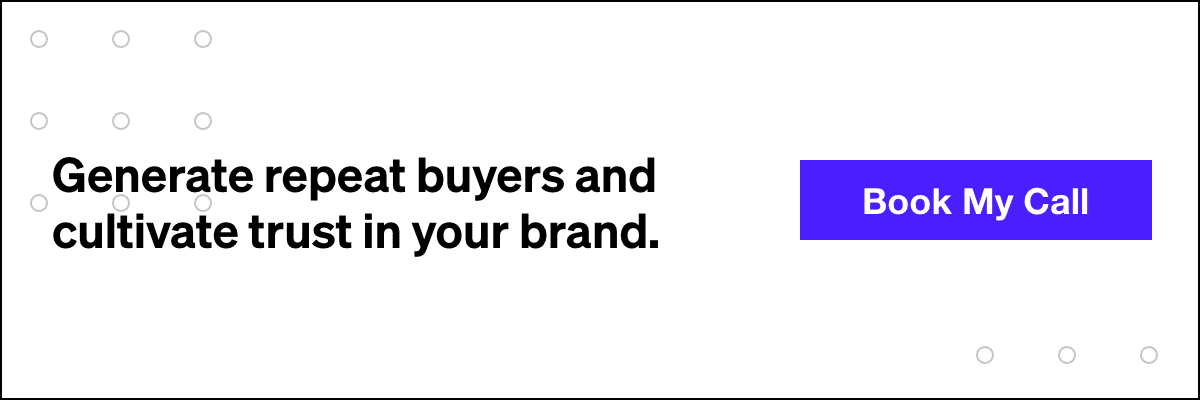OTT Advertising Explained

How do your friends watch television? While some may still have a TV set in their living rooms, you probably know several who exclusively use a laptop, tablet, projector, or another setup that excludes a cable box.
Today, some are calling cable and satellite a thing of the past. And even households with cable access often supplement it with subscriptions to Netflix, Hulu, and other “over-the-top” (OTT) streaming services that bypass traditional television providers.
OTT advertising allows companies to market to these subscribers whenever and wherever they choose to stream. So what is OTT advertising and how does it work? In this short guide, we’ll cover everything you need to know about the potential benefits of OTT advertisement and how they can positively impact your digital marketing services for your business.
OTT’s Growing Market Share
OTT advertising allows you to reach people who subscribe to an “over-the-top” streaming service. This phrase and acronym refer to the fact that over-the-top providers allow access to the content above and beyond the strictly scheduled programming available through more traditional providers.
But just how popular is OTT viewership?
While 75% of US households still have a cable or satellite subscription, that number isn’t necessarily growing. On the other hand, the OTT platform is gaining in popularity:1
- 40% of the people without cable are “cord cutters”—individuals who previously had cable and have since switched exclusively to OTT.
- In 2017, 67% of households with cable subscriptions used a streaming service to access additional content.
- OTT is especially popular with young people. 86% of internet users between 15-24 watched TV online in 2017.
Since younger generations prefer to watch television online, OTT has the potential to continue growing. Likewise, OTT devices (aka smart TVs) like Roku, Apple TV, Amazon Fire, and PlayStation provide more options than ever for viewing content from different OTT providers in one place.
Cable and satellite are both more expensive than streaming subscriptions, making it a cost-effective option for “cord-cutters” and an attractive supplement to cable subscriptions. After all, OTT provides features like:
- Extensive libraries of on-demand media
- The ability to view programs at any time (not just live)
- Accessibility across different devices (tablets, phones, computers, and smart TVs)
And with more eyeballs on OTT content, there are new opportunities for OTT marketing.
Popular OTT services include:
- Netflix
- Amazon
- Hulu
- YouTube
- Vimeo
- Vevo
- Disney+
- Peacock
Depending on your marketing goals, you could choose to advertise through any OTT service that plays commercials.
Who Can You Reach on OTT?
The majority of the OTT audience is adults under 56.2 Millennials account for just over half of OTT ad impressions, while Gen X accounts for another quarter.
Happily, these same demographic groups are those who are most likely to research brands and make purchases online. If your company thrives on eCommerce sales, OTT could play an important role in your overall marketing strategy.
The Growth of OTT Advertising
OTT advertising allows SMBs to deliver ads through streaming devices and services.
Before 2020, OTT was already growing. However, the advent of the COVID-19 pandemic meant that people spent more time than ever watching streaming content and shopping via eCommerce rather than visiting traditional retail stores.
This led to heavy investment in OTT.
Even as states and businesses reopen, there’s been a permanent shift to new modes of brand discovery and purchasing. And as new apps like Peacock and HBO Max continue to provide streaming options to consumers, the potential for OTT advertising is only expected to grow.
How OTT Differs from Traditional TV Advertising
In traditional TV advertising, you compete with other businesses for highly sought-after time slots that correspond to popular television shows. Ads only reach people if they tune into a program live since those who choose DVR can easily fast-forward past ads.
- With traditional television advertising, marketers can place ad buys according to Nielsen segmentation based on age and gender.
- This method hasn’t always been effective. In fact, 74% of TV viewers say TV commercials aren’t relevant to them.3
- If you’re a cosmetics company looking to reach millennial women, for example, your market research might tell you your customers watch The Bachelor. However, your ad might also appear to hundreds of thousands of older women who are uninterested in switching from their current favorite lipstick.
OTT advertising potentially solves this issue for consumers and companies by enabling “addressable advertising.”
With OTT, two people watching the same show can see completely different ads.
In some cases, OTT ads can even have a CTA embedded directly in the ad. For example, users streaming on Hulu or YouTube from their laptop could choose to visit your site or access an offer right away. In addition, OTT allows you to target a more specific audience, as we’ll discuss in the next section.
OTT Segmentation
As a marketer, you can place bids to reach a hyper-specific market segment on OTT.
How does it work?
Customers access their OTT streaming platform via the same WiFi network that they use to:
- Research products and services
- Browse social media
- Make new purchases
Thanks to advanced data analytics tools, customers’ television viewing habits can be correlated with their browsing habits, buying behavior, and demographic information, including:4
- Age
- Gender
- Income level
- Education
- Ethnicity
Since many viewers have a unique digital thumbprint, it’s easier than ever to place bids to reach individuals in your target market.
You can segment users by:
- Demographics – Place bids to target based on demographic factors like those listed above.
- Behavior – Hone in on users who are already searching for a specific product or service or who have recently made a purchase in a relevant category.
- Technology – If your ad looks best on a specific device or is most relevant to users with a specific OS or connection speed, target subsegments who meet those technical specs.
- Geography – Make sure you reach users in the right market and exclude those in areas that you can’t serve or ship to. This makes OTT ideal for local and regional businesses.
- Time-of-day – Some data suggests that consumers make more purchases over the weekend. If your internal research suggests a certain time of day may yield a better ROI, keep that in mind when placing your bid.
Thanks to these advanced segmentation tools, your ad is more likely to find a relevant target audience than when aired on traditional television. As an added benefit, there’s less competition in this emerging market, which can make it relatively affordable to reach viewers.
Retargeting with OTT
Retargeting is an increasingly important strategy for driving users from the top of your sales funnel to the purchase stage. If users show interest after viewing your ad through their OTT, they could progress to Googling your brand, visiting your website, or viewing your social media.
Retarget to interested users and keep your product and the front of your mind through:
- Ads on social media sites including
- Ads on search engines and websites
Tracking Your Results With OTT
When you air ads on television, there are ways to correlate ad spend with upticks in searches, followers, and website hits. However, the data is much less precise, since you won’t know for sure if a particular customer saw your commercial or simply happened to search around the time it aired.
In contrast, OTT offers advanced options for tracking the results of your spend.
Because potential customers are watching videos on trackable devices, it’s much easier to see how the user journey unfolds from OTT ad to web search to retargeting and, eventually, to purchase. If you aren’t getting the results you want, you can easily make changes like the following:
- Try several ads at once to see which performs best. Then, continue spending on the best performer.
- Target a different audience to see if you achieve a better ROI with a different approach.
- Revisit your user journey if audience members tend to drop off after visiting your website or clicking a retargeting ad. Even if your OTT ad is working, other parts of your strategy may need to change.
As you make nimble adjustments, you’ll begin to see the strategy that delivers the best results.
Challenges of OTT
As you get started with your video campaign, be aware of a few potential pitfalls in this medium.
OTT advertising requires a unique approach:
- Adaptability – Because potential customers can view content on large-screen, high-resolution smart TVs or on their phones, ads must be formatted to work on a variety of devices.
- Length – Ads must be short, as viewers may have the option to “skip” ads after viewing 30 seconds or so of content. Make sure to understand the market you’re advertising in.
- Ad frequency – Have you ever seen the same ad four or five times while streaming a single show on Hulu? This can annoy viewers, creating the exact opposite effect that you want. Be sure to set caps on the number of times an ad will appear to a given audience.
- Bots – It’s essential to work with a reputable partner who is able to filter out any fake data from bot views so that you can get an accurate sense of your ad’s performance.
PDM and OTT: A Match Made in Heaven
OTT Advertising can be an effective, ROI-driven way to advertise in an emerging marketplace. However, just like any new advertising medium, there’s a learning curve.
At PDM, we integrate OTT into a holistic marketing campaign that imagines the user’s journey from start to finish across a variety of platforms and entry points. From crafting effective ads, meeting the most relevant market segment, to understanding the data, we’ll champion your brand every step of the way.
Interested in learning more? Check out other helpful tips regarding what is CTV and OTT vs CTV at PDM today!
Sources:
- National Telecommunications and Information Administration. Cutting the cord. https://www.ntia.doc.gov/blog/2019/cutting-cord-ntia-data-show-shift-streaming-video-consumers-drop-pay-tv
- Forbes. What brands need to know about developing an OTT Strategy. https://www.forbes.com/sites/forbesagencycouncil/2019/04/16/what-brands-need-to-know-about-developing-an-ott-strategy/?sh=20c9f3d72661
- Forbes. Television is embracing audience segmenting. https://www.forbes.com/sites/alanwolk/2018/08/06/television-is-embracing-audience-segmentation-as-addressable-ott-continue-to-explode/?sh=5d5e3acc5c12
- Princeton CITP. Tracking Ecosystem of Over-the-Top TV Streaming Devices. https://tv-watches-you.princeton.edu/
Our Editorial Standards
Reviewed for Accuracy
Every piece is fact-checked for precision.
Up-to-Date Research
We reflect the latest trends and insights.
Credible References
Backed by trusted industry sources.
Actionable & Insight-Driven
Strategic takeaways for real results.


















